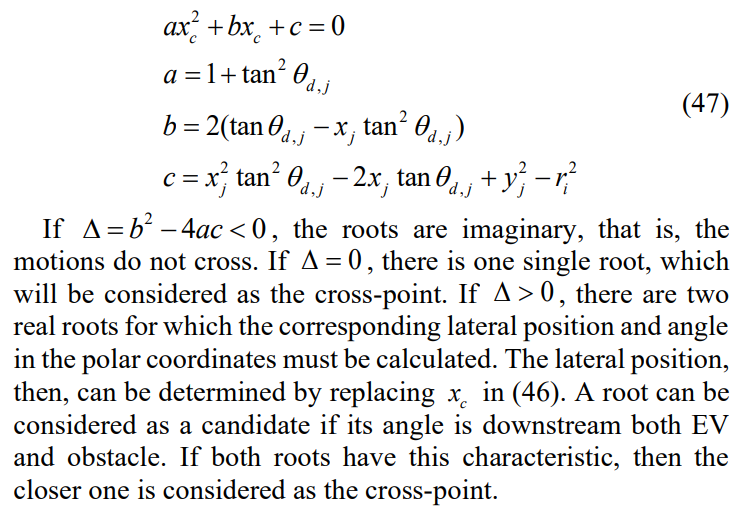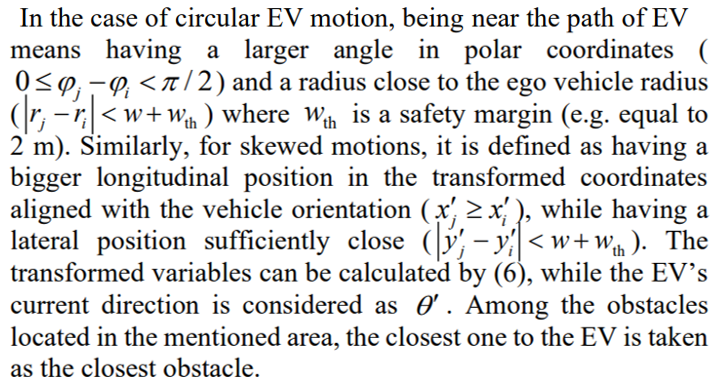and the distribution of digital products.
Handling Complex Vehicle Movements: Techniques for Finding Cross-Points and Obstacles
:::info Authors:
(1) Mehdi Naderi;
(2) Markos Papageorgiou;
(3) Dimitrios Troullinos;
(4) Iasson Karafyllis;
(5) Ioannis Papamichail.
:::
Table of LinksThe Nonlinear Feedback Control
OD Corridors and Desired Orientations
Boundary and Safety Controllers
Appendix A: Collision Detection
Appendix B: Transformed ISO-Distance curves
Appendix D: Safety Controller Details
Appendix E: Controller Parameters
APPENDIX D: SAFETY CONTROLLER DETAILSA. Finding cross-point when EV and obstacle have circular and skewed motions, respectively
\ In this case, the cross-point can be found by crossing the following movement equations:
\

\ So, the cross-point’s longitudinal position is one of the roots of the following second-order polynomial that results from (46) after simplification:
\

\ B. Finding cross-point when EV and obstacle have skewed and circular motions, respectively
\ Following a similar procedure to the previous one, the crosspoint can be found by calculating roots of the following equation:
\

\ The found cross-points should be transformed to the coordinates aligned with the EV’s desired orientation. If they are behind the EV or obstacle or the roots are not real, they are ignored. Otherwise, the closest cross-point is considered.
\ C. Finding the closest current obstacle
\

\
:::info This paper is available on arxiv under CC 4.0 license.
:::
\
- Home
- About Us
- Write For Us / Submit Content
- Advertising And Affiliates
- Feeds And Syndication
- Contact Us
- Login
- Privacy
All Rights Reserved. Copyright , Central Coast Communications, Inc.